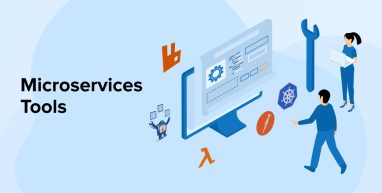
Microservices is an architectural pattern used for building large and complex apps. It breaks down the large app into various small, independent services. Each microservice is loosely coupled with others, which allows communication between them and maintains the functionality of the app.
Nowadays, the best software development companies leverage this pattern to deliver scalable and secure enterprise applications. However, to succeed, you must also have the appropriate microservices tools that help in building and managing microservices.
This article discusses the best microservices tools that you can use for your project.
1. What are Microservices Tools?
Software programs that simplify the task of developing, deploying, and maintaining applications with a microservices architecture are known as microservices tools. Developers leverage them to manage crucial tasks like handling configurations, distributing load, and discovering network applications to improve the efficiency and stability of the microservices environment.
Microservices use APIs to share features. Software components can communicate using APIs. For example, the streaming services from Netflix are handled with an API gateway.
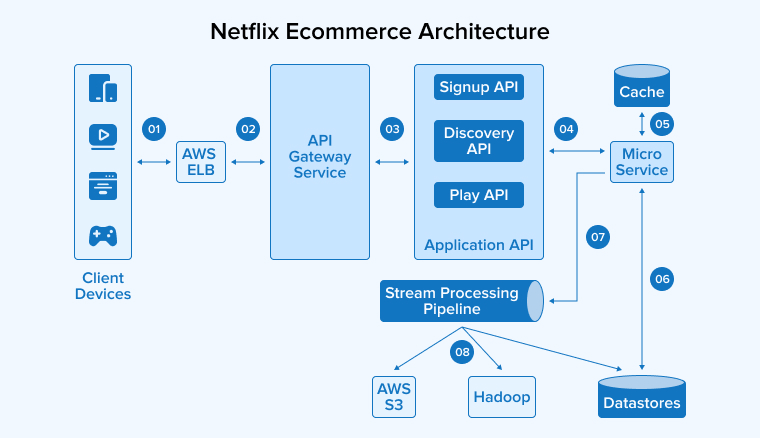
However, not all APIs are microservices, as they imply an approach to app development. Meanwhile, other APIs such as REST APIs focus on communication and design principles.
Further Reading on: Microservices vs APIs
2. Top Microservices Tools by Category
Microservices tools vary in shape and size. Hence, they are categorized according to their work and characteristics. Let’s browse through each category and discuss the top players of the game.
2.1 Messaging Tools in Microservices
Here are a few messaging tools used in microservices.
2.1.1 RabbitMQ
If you are working with distributed systems, chances are you will be having a lot of communication-related problems. But using RabbitMQ, you can establish the pattern to communicate between microservices. This tool also helps you scale your application or simply exchange events between different services.
2.1.2 Amazon Simple Queue Service (SQS)
Establish robust, flexible, and reliable communication for your microservices with the help of Amazon SQS. If you are opting for the publish-subscribe model for microservices communication, then Amazon SQS effectively solves many developer problems. Queue provides a secure repository to store pending messages as a part of its robust messaging services. The most important thing is that all your messages are secure.
2.1.3 Google Cloud Pub/Sub
Google Cloud Pub/Sub is a fully managed real-time messaging service. You can use it to send and receive messages between microservices. Additionally, it also manages every asynchronous request your app receives when integrated with your app. Moreover, it also helps reduce the response time and ensures your app users won’t have to wait for too long.
2.2 Monitoring Tools in Microservices
Below are some of the best monitoring tools for microservices.
2.2.1 Jaeger
If there are complex interactions between your software components or services, Jaeger can effectively take care of them. This end-to-end distributed tracing tool is specifically designed to monitor and troubleshoot complex interactions in microservices environments.
Every movement or progress of a transaction or request can be tracked through different services using Jaeger. The most critical components of this monitoring tool include web UI/visualization, back-end storage, data pipeline, and instrumentation.
Together, these components can track and record all transactions across microservices architecture. Jaeger can capture the transactions in spans and then correlate them to form a trace. Furthermore, Jaeger supports OpenTelemetry making it a fitting option for scaling purposes.
2.2.2 Graphite
Graphite is a data monitoring tool that gathers, stores, and displays time series data in real-time. It is used to analyze the data upon given metrics, derive insights into the root causes of the problem, and troubleshoot them effectively.
Protocols like SNMP aren’t required in Graphite because it leverage a network-based strategy to ingest and handle external system metrics data. This enables the organizations to monitor time series data.
Graphite allows you to create a variety of graphical visualizations using its numerous integrations. Additionally, it provides an integrated event tracker for system monitoring and a handful of utilities to work with time series data. Carbon, Whisper, and the Graphite web app are the basic components of Graphite tools.
2.2.3 Prometheus (+ Grafana)
SoundCloud developed an open-source alerting and monitoring tool called Prometheus. It accumulates metrics from various sources, such as Docker and Kubernetes, at a predetermined time interval and allows access to them using a Prometheus-specific query language. Prometheus also examines the rule expressions, exhibits results, and triggers alerts when certain conditions are fulfilled.
Although Prometheus offers a variety of features, including replication, automated multi-tenancy, efficient storage backend, and its clear labeling structure stands out as the most popular. With this feature, users can describe the monitored resources that allow Prometheus to present data in an organized manner. This makes it easy to search for metrics.
As an open-source analytics platform, Grafana empowers users to monitor and visualize the time series data offered by Prometheus, and other data sources. Grafana offers a wide range of features, including collaboration features for efficient data management, templatized content libraries, analytics tools, alerting capabilities, customization options for dashboards, an intuitive UI, and more.
Grafana also comes with robust integration capabilities, which allows it to seamlessly pair with other tools to provide a user-friendly view of microservices metrics and offer real-time insights into their products and services.
2.3 Kube Development Tools
Let’s explore a comprehensive list of essential tools that streamline the development process.
2.3.1 Kubernetes
Because Kubernetes offers container orchestration, it could have been categorized as an orchestration tool. However, as a microservices tool, it deserves to be recognized as a separate category. When it comes to deployment practices, nothing can beat Kubernetes. Instead, it is setting standards for other tools.
Service discovery, load balancing, or container scheduling are three key functionalities Kubernetes offer. You can also use Kubernetes with other open-source Kubernetes tools for microservices development. Let’s check out a couple of options.
2.3.2 Telepresence
Sometimes, users have to wait for containers to deploy because the process is unsettlingly slow. But you can speed up the local development in Kubernetes with Telepresence. It offers a hybrid model that allows you to code your services locally on your laptop. Meanwhile, your services are simultaneously connected to Kubernetes through a two-way proxy. Although it’s great in production, it’s very effective in development.
2.3.3 Istio
In Kubernetes, service deployment can be managed with Istio. Its service mesh technology allows more manageable, reliable, and secure communication between microservices. It also helps you enhance the interactions and relationships between the microservices and your application.
2.4 Orchestration Tools in Microservices
Here we discover the orchestration tool to simplify the workflow.
2.4.1 Conductor
Netflix created a microservices orchestration engine for its open-source software ecosystem. It integrates with a flow orchestrator and operates in the cloud to execute tasks across microservices. This tool facilitates and controls all the interactions among microservices.
Orkes conductor is a fully compatible version of Netflix conductor, with an Orkes-certified stack. Its wide array of features allows the orchestration and management of microservices-based systems. Conductor offers a powerful foundation to build and maintain a complex distributed app.
While using the Conductor, developers can focus on logic and innovation, as this tool takes care of everything from scalability and fault tolerance to load balancing and service discovery. The enterprise version of this orchestration tool is used on popular cloud platforms like GCP, Azure, and AWS. Conductor supports hybrid deployment for the orchestration of apps and services throughout hybrid cloud models.
2.5 Architectural Frameworks in Microservices
Below are the top architectural frameworks for microservices.
2.5.1 GoaDesign
Empowered by the Golang programming language, Goa adopts a design-first approach to develop microservices and REST APIs. In addition to that, Goa helps create various components from JavaScript libraries to JSON documentation that accompanies the APIs. The Google Cloud Platform hosts the design services provided by Goa.
2.5.2 Kong
With several ready-to-deploy plugins, Kong can be used in different operating environments. These plugins help with the development and deployment of microservices. Kong also allows you to build API-centric apps using container and microservices design patterns rapidly.
2.6 Toolkits in Microservices
Here let’s take a look at these useful toolkits.
2.6.1 fabric8
Developers leverage fabric8, an open-source platform as a service tool, to offer a configuration management system using git. It can do a wide range of tasks, from managing complexities in IP addresses to port mapping. It also performs load balancing to services, providing high scalability and availability.
2.6.2 Seneca
Developing message-based microservices apps is easy with Seneca. As a microservices toolkit for NodeJS, Seneca allows you to create clean and well-organized code. It also enables you to systematize the business logic in your app effortlessly.
2.6.3 Google Cloud Functions
Cloud Functions from Google Cloud Platform are a serverless and lightweight tool. Deploying and maintaining this console is easy. It adopts an event-driven architecture that empowers developers in developing de-coupled microservices apps. Cloud Functions are available on a pay-per-use basis. It can be integrated with other products using various APIs from Google.
2.7 Serverless Tools
Let’s take a close look at these efficient serverless tools.
2.7.1 Microsoft Azure Functions
Extend the capabilities of your existing Azure app by incorporating event-driven, scale-based, and compute-on-demand functions. You only have to pay for the resources you use. Processing and reacting to events becomes easy with Azure functions as it connects the developers with the data sources and messaging solutions. They can also be used to create HTTP-based API endpoints.
2.7.2 AWS Lambda
You get infrastructure-less servers for your microservices system from AWS Lambda with pay-per-use charges. You can also host an API or REST service if you use Lambda along with the AWS API gateway. When these two are used together, they can enable your API to serve any type of user request.
2.7.3 Claudia
If you want to use Lambda microservices but don’t want to handle AWS deployments, then opt for Claudia. It simplifies the deployment process of API Gateway and AWS Lambda. Claudia also enables you to automate configuration tasks and avoid error-prone deployment. In addition to these unique features, Claudia provides some enhancement tools like Claudia Bot Builder and Claudia API Builder.
2.8 Testing Tools in Microservices
Explore the below-mentioned testing tools for microservices.
2.8.1 Postman
Postman is an API testing platform that facilitates easy collaboration with other users to build APIs quickly. It streamlines API management and simplifies the development process.
This tool allows you to send the GraphQL, REST, and SOAP queries directly. It also enables you to form HTTP requests to develop, test, and document APIs. Along with this, tracking the performance of the APIs and response times regularly is possible with Postman.
It provides a user-friendly dashboard, eliminating the need to configure the frameworks. This API testing tool automates manual testing and integrates it with the CI/CD pipeline. It also ensures that any changes made to the code do not create problems for production.
With Postman, you won’t need to set up a backend server to simulate the responses and endpoints of an API to communicate effectively.
2.8.2 API Fortress
API Fortress is an API health and testing tool. It automates health monitoring, functional testing, and load testing of internal, partner, and third-party APIs. These automated tests are part of a CI pipeline, enhancing continuous API monitoring and testing. Designed based on API architectural patterns and practices, API Fortress is entirely code-free. It is available in three options: self-hosted, hosted cloud, and hybrid model.
Creating a test in API Fortress is easy. You can use a recorded API traffic or a specification file with the payload. The tools also provide a downloadable IDE called Forge where you can edit tests. This can also be done using the drag-and-drop GUI. It is easy to edit these tests and doesn’t even affect the existing workflow.
API Fortress comes in handy for interacting with CI/CD systems, leveraging the current version control system, automating test generation, and collaborating with team members. If there is any problem, then it will be detected automatically before launch to ensure a smooth process.
2.8.3 Tyk
Tyk is an open-source API management platform. It is one of the modern, scalable, and fast testing tools that comes with low latency, high availability, and low cost of ownership.
Some of the important components of this tool include a developer portal, dashboard, analytics portal, and an API gateway. Tyk supports gPRC, TCP, GraphQL, and REST protocols. It allows you to establish scalable, robust, and secure API-led business connections throughout your services and systems easily and quickly.
Tyk is a versatile tool that can be installed on-premises, in the cloud, or used as a hybrid model. Developers leverage Tyk to enhance efficiency and quality, which is certainly helpful in boosting innovation and creativity.
Further Reading on: Microservices Testing Strategies
3. Conclusion
Choosing the right development tools is crucial for a developer, especially when working on a microservices project. Selecting suitable tools allows you to leverage the full potential of microservices to deliver robust and reliable applications.
Trends change rapidly in the software industry. Therefore, it becomes necessary to keep yourself updated on the latest technological trends and tools used in the market. This article discusses some of the most popular tools preferred by developers. Picking the right ones can certainly help you achieve your microservices goals.
FAQs
Is Postman a microservice?
By utilizing Postman, a microservices testing tool, you can guarantee that no workflows in your app are broken before release.
What is Kubernetes used for?
Kubernetes is used to automate the operational tasks of container management. Moreover, it comes with pre-built commands for app monitoring, application scaling, making changes to the app, and deploying applications.
What are the two benefits of microservices?
Microservices offer two important benefits: increased resiliency and scalability. They make it easier to identify and resolve the issues in the code. Moreover, the failure of one service does not affect others. On the other hand, the development, deployment, and maintenance of each service are independent. So, it is possible to scale them according to requirements.
Are microservices in demand?
There is an increased demand for serverless architectures and on-demand computing resources. Also, designing and deploying microservices doesn’t need a large amount of initial investment. So, the future of microservices is bright indeed.


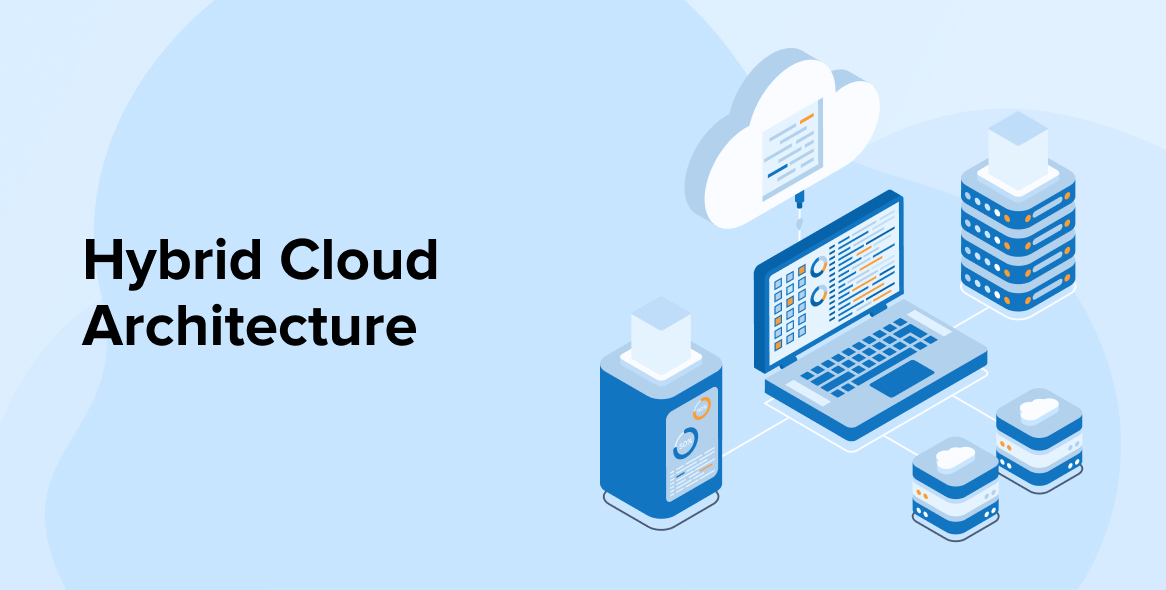
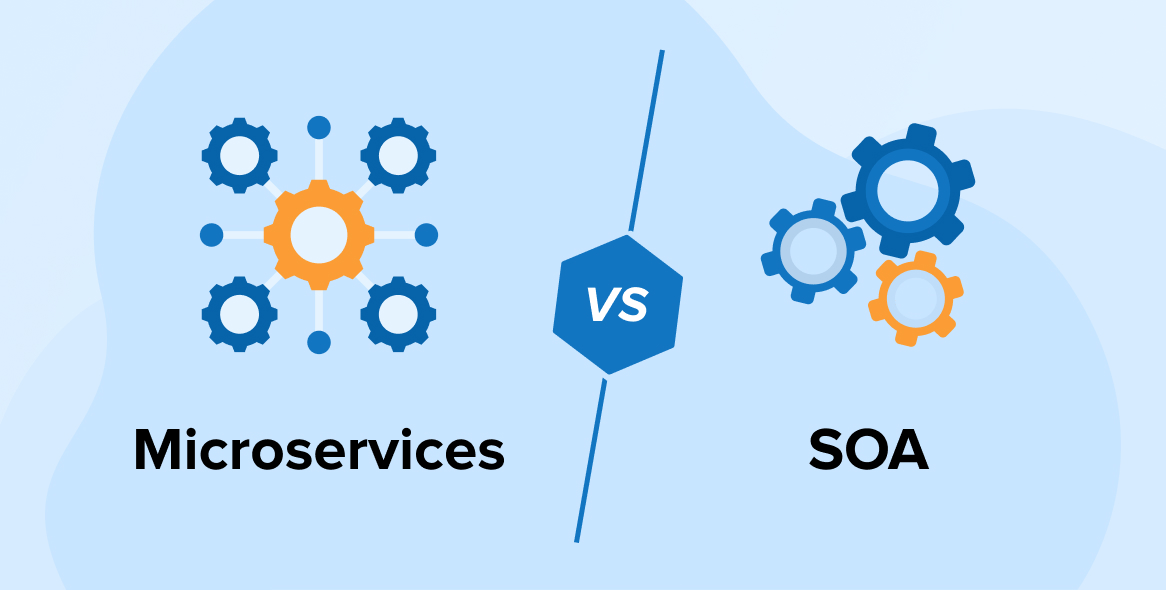
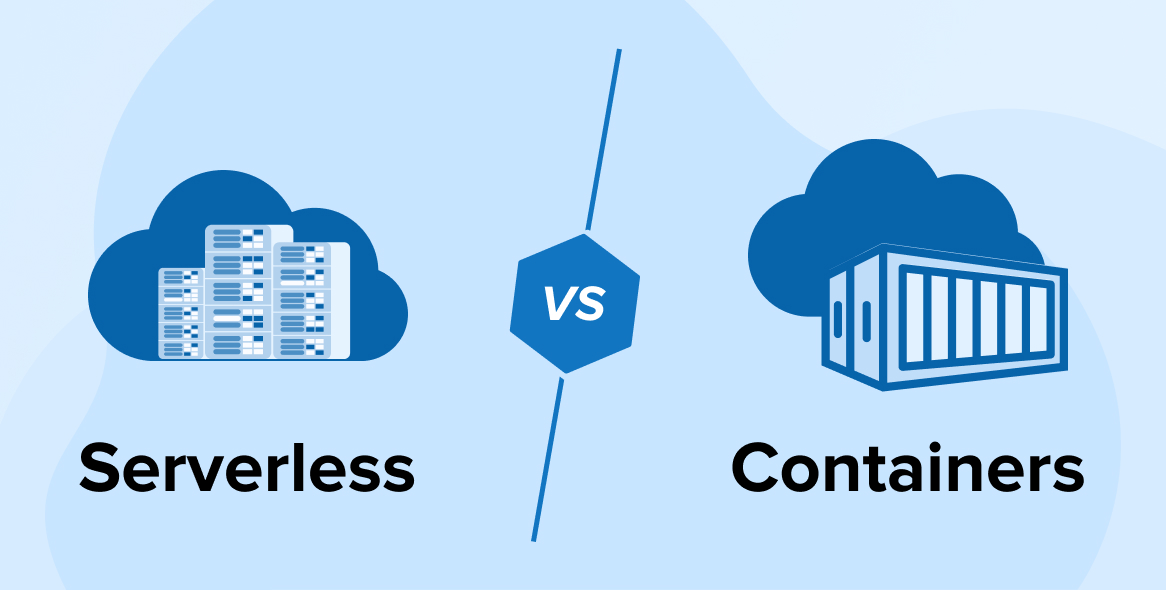

Comments
Leave a message...